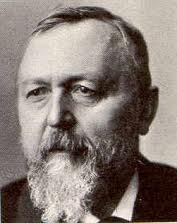
Pathologic Reaction to Alcohol

Pathologic Reaction to Alcohol: English Translations of, and Original Texts in Facsimile for, «Ueber eine Form des Rausches, welche als Manie verläuft» (1869) and «Zustände pathologischer Alkoholreaktion» (1903) by Richard von Krafft-Ebing (2011; 45 pages, $10.00; $15.00 [£10.00] international)
In 1869 the distinguished Viennese psychiatrist Dr Richard von Krafft-Ebing (1840-1902) published in a Bavarian forensic-medicine journal the results of his research into a phenomenon he called "pathologic reaction to alcohol" (his translation of pathologische Alkoholreaktion). It is a rare but long-observed disorder in persons whose metabolism of ethanol results in psychosis rather than in intoxication.Eighty years later the American Psychiatric Association (APA) would establish a regularly-revised catalogue of diagnoses for mental disorders. Each successive edition hoped to offer an increasingly definite description for these disorders. After sixty years it has become popularly known as "the DSM" (for Diagnostic and Statistical Manual of Mental Disorders). It is treated by academicians and psychiatrists as a sort of professional "bible." But, at the same time, it has become something of a supreme court in the arbitrariness of its inclusions, raising considerable controversy among practitioners.
In its first DSM (1952), the APA included a diagnosis of "pathological intoxication," for cases where a smaller than usual amount of alcohol appeared to precipitate intoxication, a quantitative consideration Krafft-Ebing had immediately dismissed from his criteria for pathologic reaction to alcohol (the APA actually used the phrasing "minimal alcohol intake," "an amount of alcohol that is insufficient to cause Alcohol Intoxication in most individuals"). In its 1980 edition the term was changed to "alcohol idiosyncratic intoxication," a nomenclature ignored by almost everyone in preference for the older "pathological intoxication." In 1994 the term was dropped altogether from the DSM, but without a clear explanation for the decision (if nothing else, the flawed provenance of the diagnosis had not lent itself to on-demand laboratory examination).
Krafft-Ebing fundamentally ruled out intoxication as an element of his diagnosis. He wrote as follows:
We would like to point out that there are numerous individuals on whom, through peculiarities in the original organisation of their brains, or through damaging influences to which they have been exposed during the course of their lives, the consumption of alcohol has, quantitatively and qualitatively, far different effects from those it has on so-called average people. We would like to assert that, on account of these physically diseased conditions, the effects of alcohol present pathologic states, should be addressed as conditions of transitory mental disorder, and should be evaluated as such legally.Without apparently ever having read Krafft-Ebing's original study, the APA held on to the belief that "Kraff-Ebing first described the condition of 'pathological intoxication,' the old terminology for AII [alcohol idiosyncratic intoxication] in 1869" ( DSM-IV Sourcebook, 1994). It expressed a "concern that sociopathic individuals could undeservedly receive a reduced sentence by claiming the diagnosis," and it criticised Krafft-Ebing's original data for being "anecdotal," from "a less critical era of psychiatry."
By today's standards Krafft-Ebing's reports do indeed seem anecdotal; the whole of one of his observations describes:
A., a weaver whose mother was often disturbed. His development offered nothing abnormal. Each time he drank wine, he became irritable, excited, and threatening, all the way up to temper tantrums. At age thirty he became insane.But Krafft-Ebing was not a fool; the occasional brevity of his written synopses (this being but one of 190 cases examined) should not be separated from the astuteness of his close personal observation in each case. Krafft-Ebing was not only the first to identify and formally address this pathology (still considered a valid diagnosis by the few who have witnessed it), but he was in every way as scientific in his methodology as are today's practitioners. His synthesis of his findings is precise, detailing seven diagnostic criteria: the unimportance of the amount consumed (a point, though it is the very first of them, completely missed by the APA); irregularity of onset; manic fits, with loss of consciousness; cerebral tension; non-ataxic coordination of the musculature; torpor of the skin; and amnesia. "Where these criteria can be found," he says, "we are certainly no longer justified in categorising the state as common inebriation, but are compelled to list it under the category of legally recognised confusion of the senses and the mind; or, insanity."The APA worried "that sociopathic individuals could undeservedly receive a reduced sentence by claiming the diagnosis"; little wonder that it didn't want to keep the diagnosis it had mistakenly thought was Krafft-Ebing's. No English translation of the original 1869 article has been available to the doctors of psychiatry penning the body of literature treating of this rare, and rarely treated, illness, a matter the current publication hopes to address.
pacrimu.org / pacrimu.org.uk
press@pacrimu.org / press@pacrimu.org.uk
Pacific Rim University Press * Post Office Box 3031 * University Station * Eugene, Oregon * U.S.A. 97403-0031